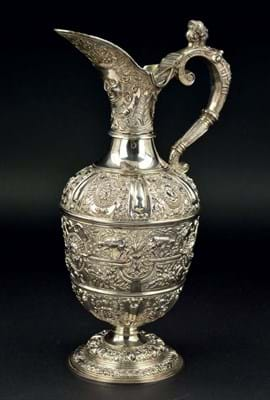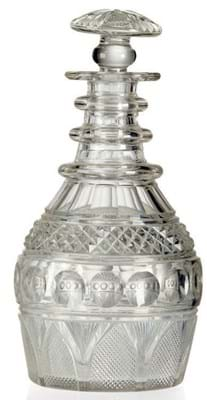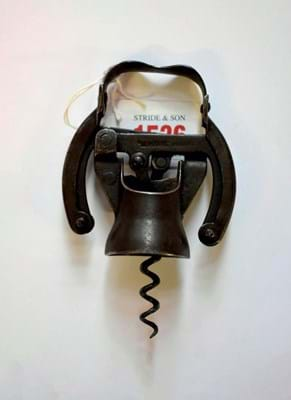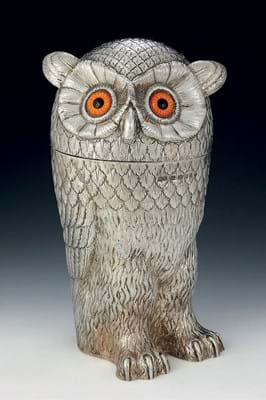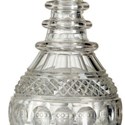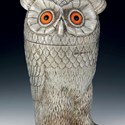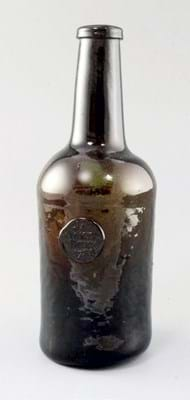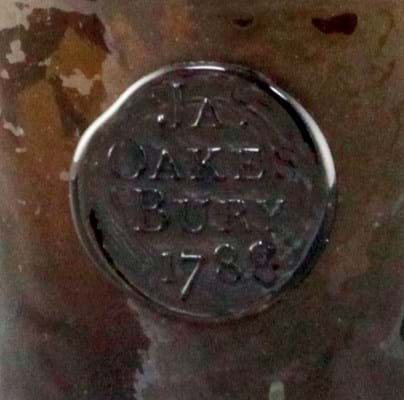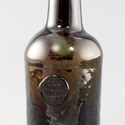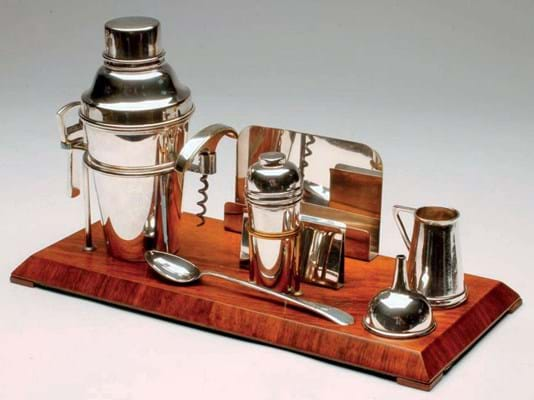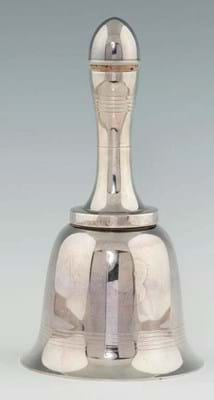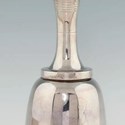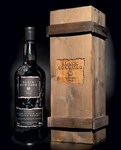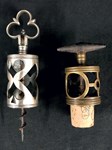The process demanded a wide range of accoutrements that added a little theatre to Georgian and Victorian dining – and anticipated a plethora of niche collecting areas.
Antique wine labels or rings that aided in identification of a bottle’s contents, funnels that helped with decanting and the filtering of sediment, corkscrews, coasters and decanters are all of appeal to oenophiles.
The wine bottle itself took time to evolve. It was not until the middle of the 18th century that ‘onion’ or mallet-shaped bottles fell from fashion to be replaced by the longer, sleeker bottles suitable for ‘laying down’ that are still used today. In fact, as bottles were rarely of a standard size until the Victorian era, it remained illegal to sell wine by the bottle in England until 1860.
Seals of approval
Bottles were privately rather than vineyard owned so it was not unusual for them to carry seals denoting the country house or public house for which they were made. Sealed bottles with names, dates and places command a significant premium in the collecting arena: many enthusiasts enjoy the social history and genealogical research that the subject offers.
As documented in David Burton’s three-volume magnum opus Antique Sealed Bottles 1640-1900 and the Families that Owned Them, each one of the thousands of recorded seals has its own story.
As a single example, consider the George III black glass mallet shaped wine bottle sold for £360 at Gorringe’s of Lewes on March 12. It carries the seal Jas. Oakes, Bury, 1788. Several of these bottles are known, some with different dates, each relating to James Oakes (1741/2- 1829), the Suffolk yarn merchant banker, who is best known today for the diaries of his social and business dealings which he kept for 49 years.
This bottle is dated 1788, the year Oakes commissioned architect Sir John Soane to make alterations to what is now 81-82 Guildhall Street, Bury St Edmunds.
The current auction record for a sealed bottle stands at £18,000 bid at Yorkshire’s BBR Auctions last year for a shaft and globe with the seal GR and the date 1682. It had been bought as a copy a decade earlier for just £30.
The auld claret jug
Like the properly calibrated wine bottle, the claret jug is also a phenomenon of the 19th century. Claret, its name a reference to the bright or clear colour of red wine from Bordeaux, had been popular in England since the marriage of Henry II and Eleanor of Aquitaine in the 12th century.
However, it was not until the second quarter of the 19th century that the silver and glass ‘claret jug’ began to appear at the dining table. In Europe and the US the form was popular from c.1830-1930.
The most famous of all claret jugs – the auld claret jug or Golf Champion Trophy presented annually to the winner of The Open – was made by Mackay Cunningham & Co of Edinburgh in 1873.
With the decline of formal dining in the West, Victorian and Edwardian claret jugs are less popular today than they were a generation ago and many are available for under £500.
However, a better-than-average example will bring more and one of Alexander Crichton’s whimsical animal novelties might be priced over £5000.
The latter, thought to be based on Sir John Tenniel’s drawings for the Alice in Wonderland series of books, include among 34 different patented models, a walrus, a crocodile, a cockatoo, a dodo, fish, squirrels, seals, ducks, budgerigars, owls, penguin and an otter.
In November, a cow seal jug with hallmarks for London 1881 sold for £16,000 (plus premium) at Sotheby’s while a veritable menagerie of jugs offered by Reeman Dansie of Colchester the same month included a matched pair of monkeys (see ATG No 2369) by Richard Hood & Son (London 1904 and 1909) sold at £15,000.
Cocktails in the mix
All trends come back around with time. Since the social media-fuelled renaissance of the early 2000s, cocktails are now more popular than ever and the once dust-gathering cocktail shaker is again an object of desire.
While the earliest date back to the 1870s, their golden age was the inter-war decades. The Art Deco era and the end of Prohibition brought an explosion of designs in silver, silver plate and chrome.
A simple plated example can be bought for under £50 but more desirable are the geometric forms and the novelties: animals, lighthouses, fire extinguishers, bells, ‘champagne’ bottles, aeroplanes and the like.


